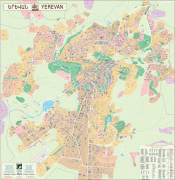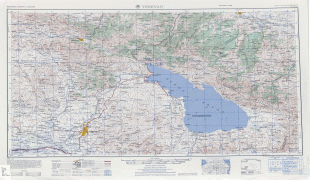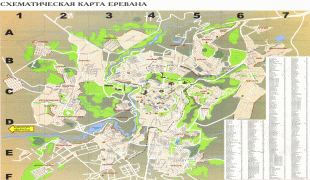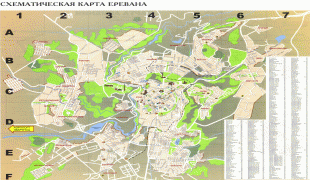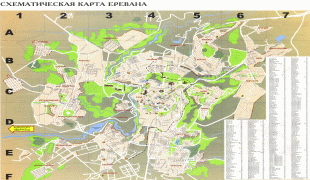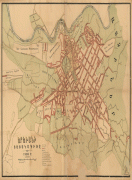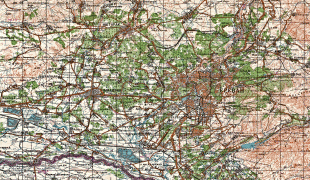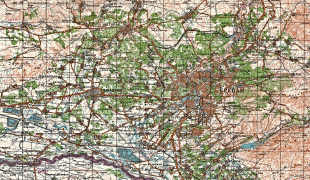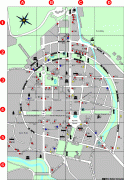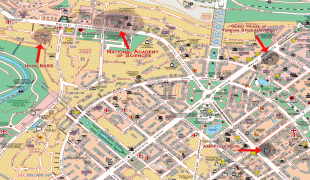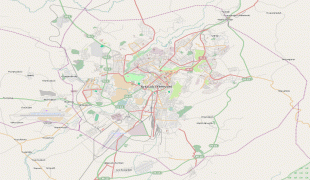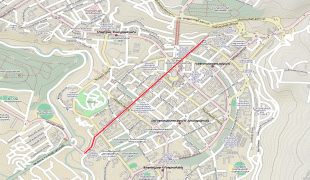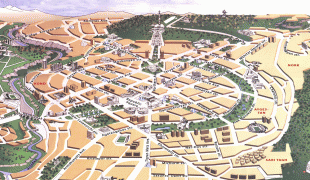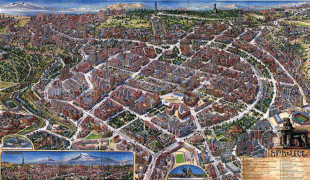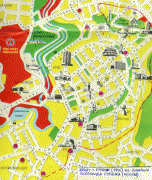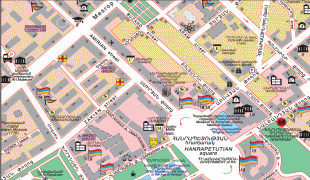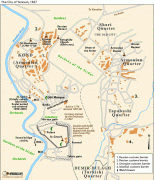Yerevan
 |
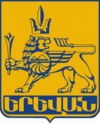 |
The history of Yerevan dates back to the 8th century BCE, with the founding of the fortress of Erebuni in 782 BCE by King Argishti I of Urartu at the western extreme of the Ararat Plain. Erebuni was "designed as a great administrative and religious centre, a fully royal capital." By the late ancient Armenian Kingdom, new capital cities were established and Yerevan declined in importance. Under Iranian and Russian rule, it was the center of the Erivan Khanate from 1736 to 1828 and the Erivan Governorate from 1850 to 1917, respectively. After World War I, Yerevan became the capital of the First Republic of Armenia as thousands of survivors of the Armenian genocide in the Ottoman Empire arrived in the area. The city expanded rapidly during the 20th century while Armenia was a part of the Soviet Union. In a few decades, Yerevan was transformed from a provincial town within the Russian Empire to Armenia's principal cultural, artistic, and industrial center, as well as becoming the seat of national government.
With the growth of the Armenian economy, Yerevan has undergone major transformation. Much construction has been done throughout the city since the early 2000s, and retail outlets such as restaurants, shops, and street cafés, which were rare during Soviet times, have multiplied. , the population of Yerevan was 1,060,138, just over 35% of Armenia's total population. According to the official estimate of 2022, the current population of the city is 1,092,800. Yerevan was named the 2012 World Book Capital by UNESCO. Yerevan is an associate member of Eurocities.
Of the notable landmarks of Yerevan, Erebuni Fortress is considered to be the birthplace of the city, the Katoghike Tsiranavor church is the oldest surviving church of Yerevan and Saint Gregory Cathedral is the largest Armenian cathedral in the world, Tsitsernakaberd is the official memorial to the victims of the Armenian genocide. The city is home to several opera houses, theatres, museums, libraries, and other cultural institutions. Yerevan Opera Theatre is the main spectacle hall of the Armenian capital, the National Gallery of Armenia is the largest art museum in Armenia and shares a building with the History Museum of Armenia, and the Matenadaran repository contains one of the largest depositories of ancient books and manuscripts in the world.
One theory regarding the origin of Yerevan's name is the city was named after the Armenian king, Yervand (Orontes) IV, the last ruler of Armenia from the Orontid dynasty, and founder of the city of Yervandashat. However, it is likely that the city's name is derived from the Urartian military fortress of Erebuni (Էրեբունի), which was founded on the territory of modern-day Yerevan in 782 BCE by Argishti I. "Erebuni" may derive from the Urartian word for "to take" or "to capture," meaning that the fortress's name could be interpreted as "capture," "conquest," or "victory." As elements of the Urartian language blended with that of the Armenian one, the name eventually evolved into Yerevan (Erebuni = Erevani = Erevan = Yerevan). Scholar Margarit Israelyan notes these changes when comparing inscriptions found on two cuneiform tablets at Erebuni:
Early Christian Armenian chroniclers connected the origin of the city's name to the legend of Noah's Ark. After the ark had landed on Mount Ararat and the flood waters had receded, Noah, while looking in the direction of Yerevan, is said to have exclaimed "Yerevats!" ("it appeared!" in Armenian), from which originated the name Yerevan.
In the late medieval and early modern periods, when Yerevan was under Turkic and later Persian rule, the city was known in Persian as Iravân. The city was officially known as Erivan (Эривань) under Russian rule during the 19th and early 20th centuries. The city was renamed back to Yerevan (Ереван) in 1936. Up until the mid-1970s the city's name was spelled Erevan more often than Yerevan in English sources.
Map - Yerevan
Map
Country - Armenia
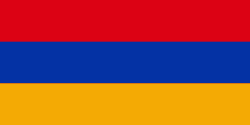 |
 |
| Flag of Armenia | |
Armenia is a unitary, multi-party, democratic nation-state with an ancient cultural heritage. The first Armenian state of Urartu was established in 860 BC, and by the 6th century BC it was replaced by the Satrapy of Armenia. The Kingdom of Armenia reached its height under Tigranes the Great in the 1st century BC and in the year 301 became the first state in the world to adopt Christianity as its official religion. The ancient Armenian kingdom was split between the Byzantine and Sasanian Empires around the early 5th century. Under the Bagratuni dynasty, the Bagratid Kingdom of Armenia was restored in the 9th century. Declining due to the wars against the Byzantines, the kingdom fell in 1045 and Armenia was soon after invaded by the Seljuk Turks. An Armenian principality and later a kingdom Cilician Armenia was located on the coast of the Mediterranean Sea between the 11th and 14th centuries.
Currency / Language
| ISO | Currency | Symbol | Significant figures |
|---|---|---|---|
| AMD | Armenian dram | Ö | 2 |
| ISO | Language |
|---|---|
| HY | Armenian language |






